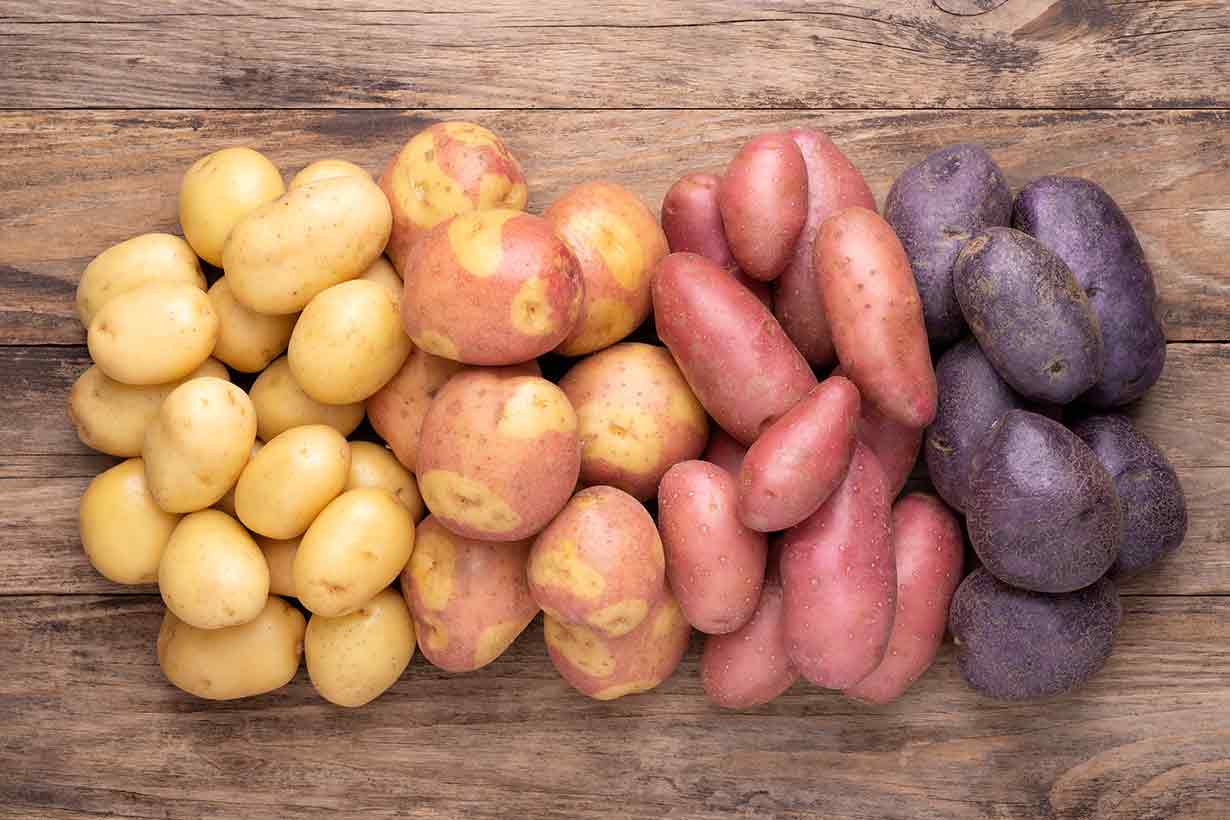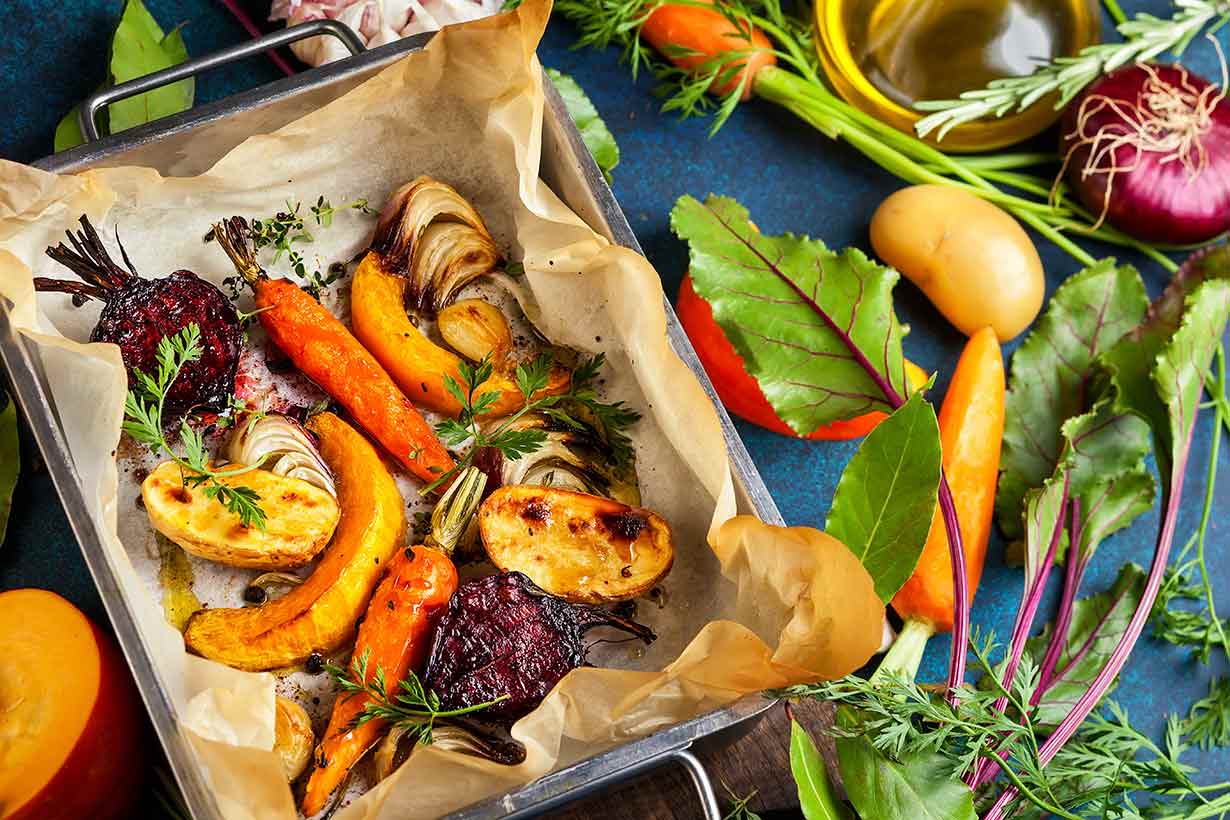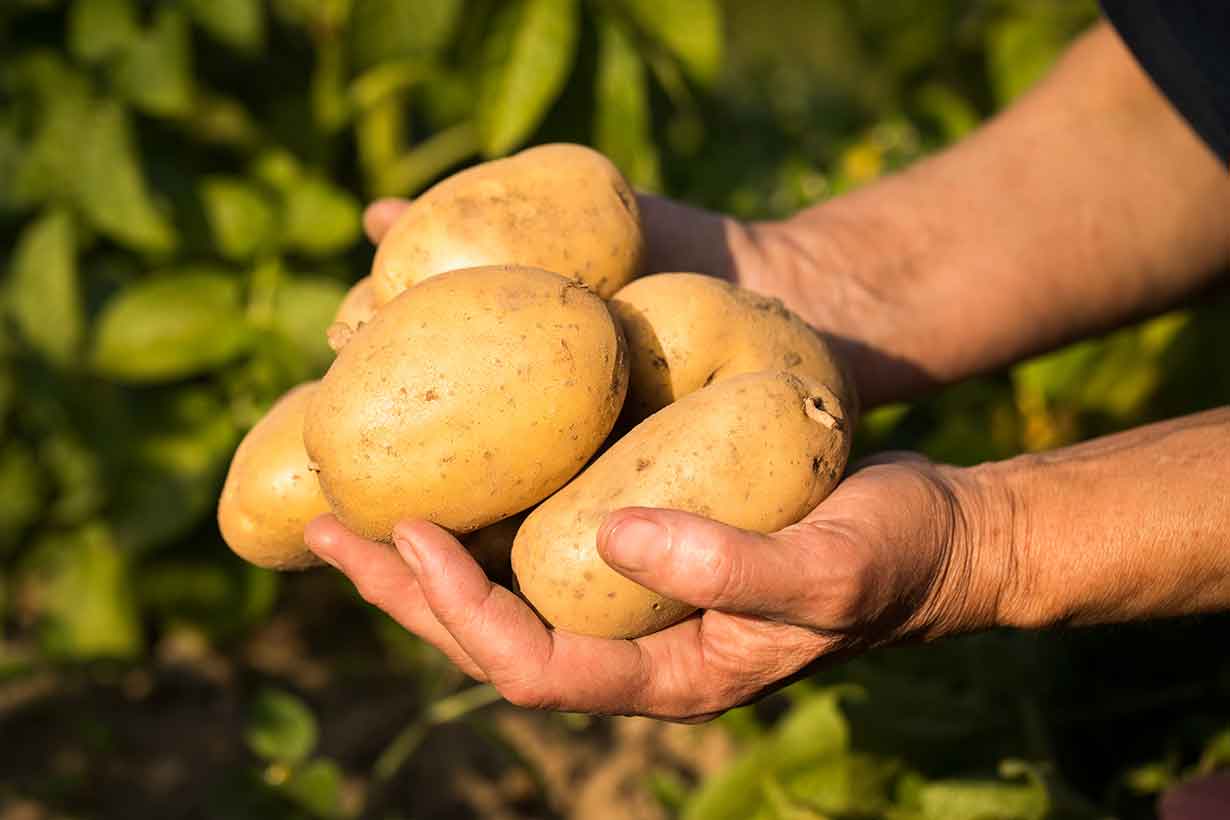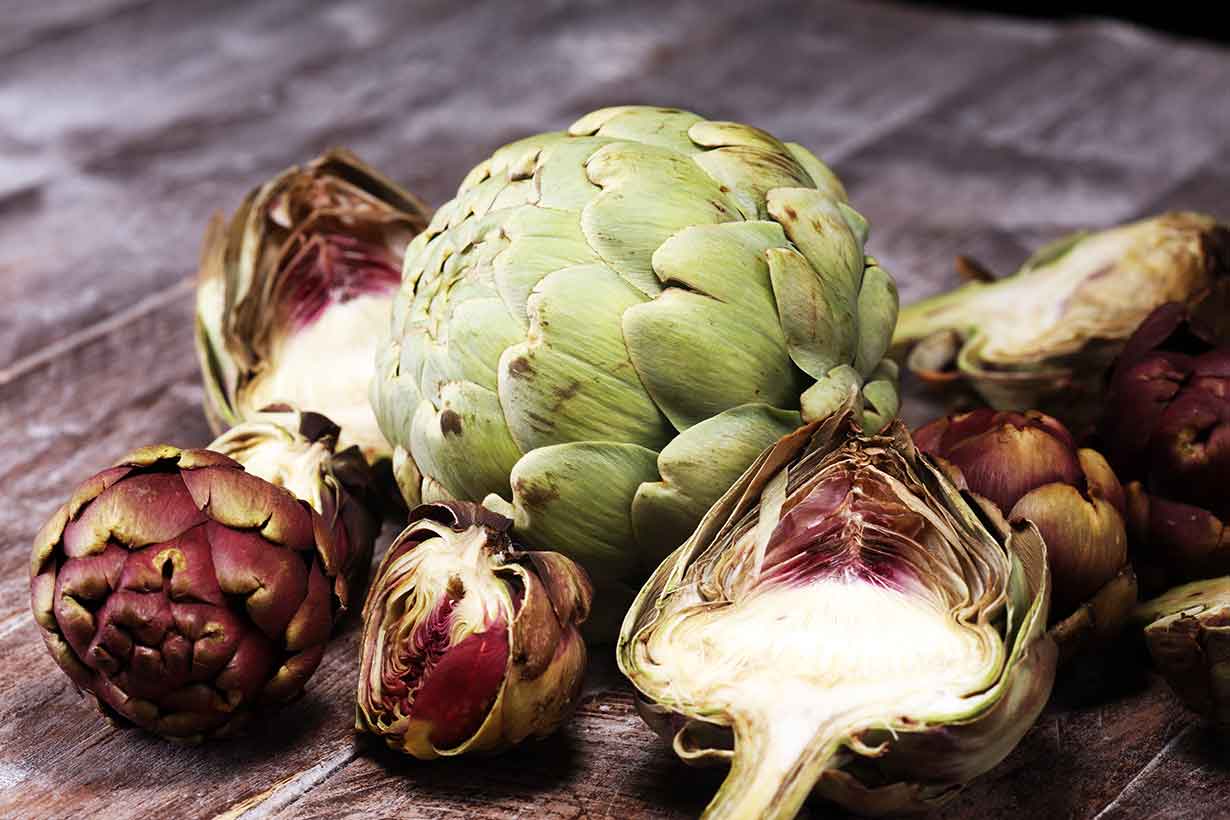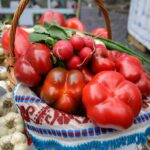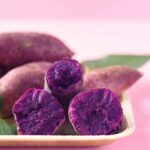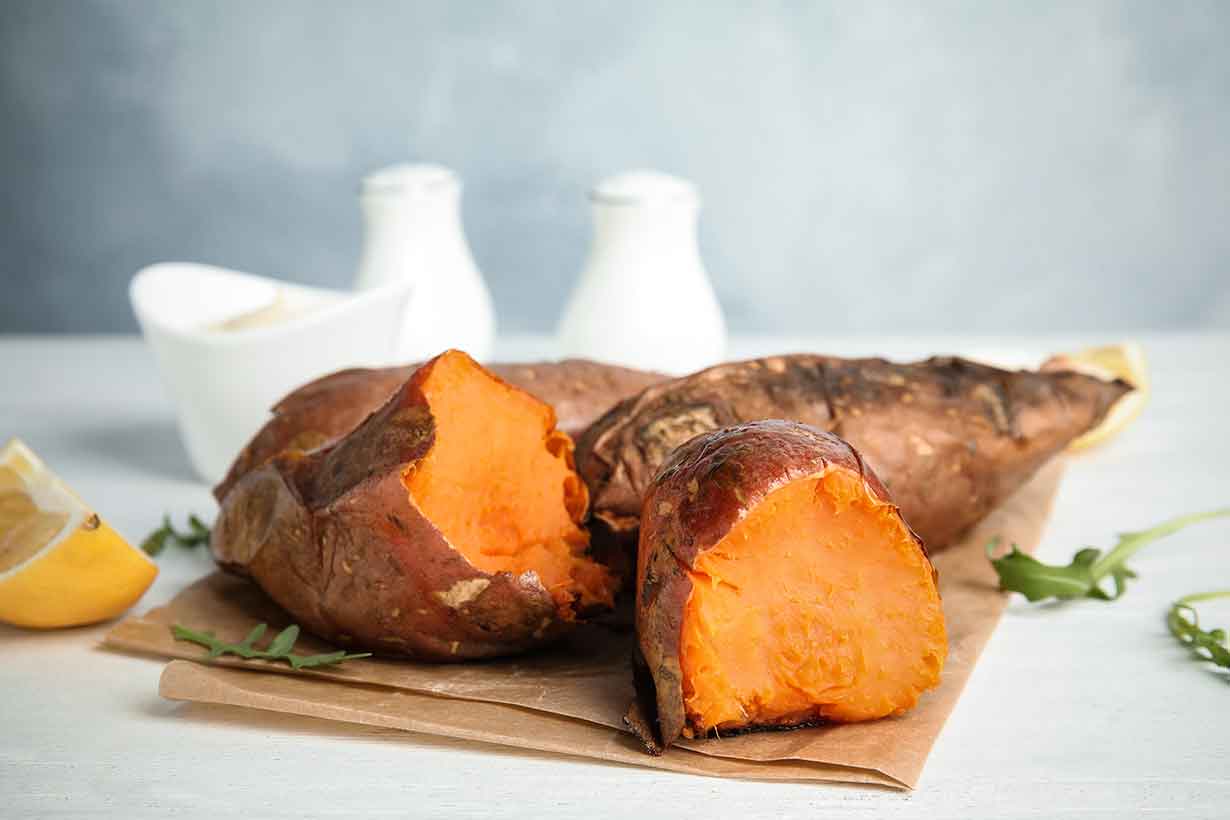Tubers are starchy vegetables that grow underground.
Compared to other vegetable varieties, tubers have unique characteristics and nutrition profiles.
This article presents a guide to five types of tubers and their nutritional values.
What Are Tubers?
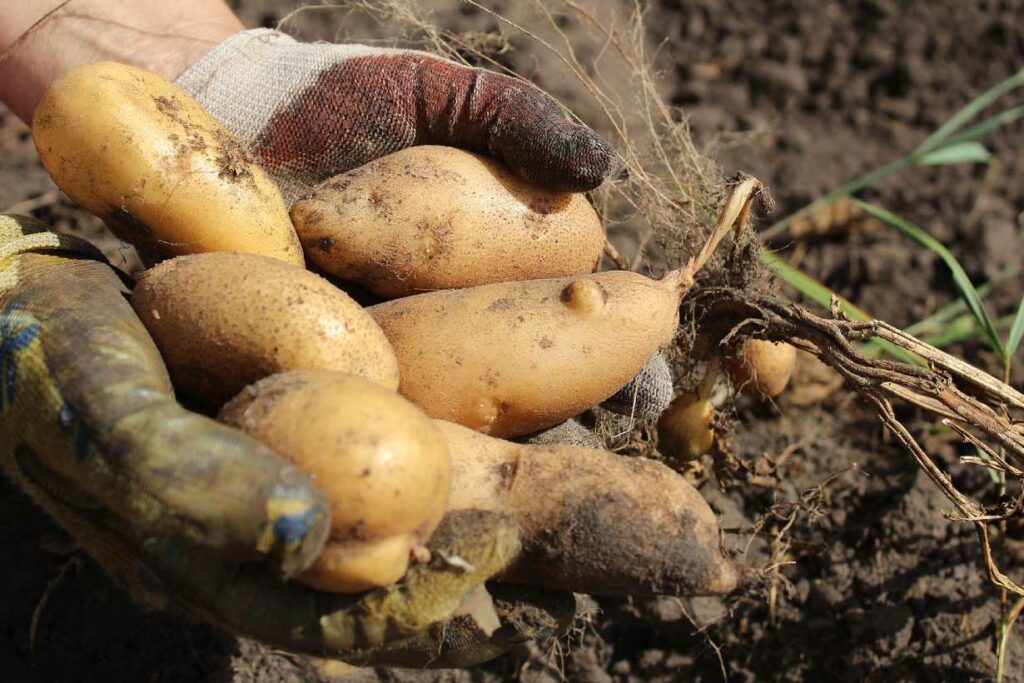
Tubers are thick storage stems of plants that grow underneath the soil.
The purpose of a tuber is as a storage organ for nutrients that the plant requires. As a result, tuber vegetables tend to contain a broad range of vitamins and minerals in reasonable quantities.
Vegetables in the tuber category include Jerusalem artichoke, jicama, potato, ulluco, and yams.
People around the world use tubers as a vegetable. A tuber vegetable can be cooked and eaten alone or used as an ingredient in various dishes.
The potato is the most common (and popular) tuber in the United States.
How Are Tubers Different From Root Vegetables?
Although they have similarities, tubers differ from root vegetables such as carrots, radishes, and sweet potatoes. While the two have a similar appearance, tubers are the edible stems of the plant rather than the roots.
Types of Tubers
We will now examine five common tubers and what they provide nutritionally. For each one, we will also look at their history, some interesting trivia, and culinary uses.
The source of all nutritional data is the USDA’s FoodData Central database (1).
Daily values (% DV) have been calculated using the USDA database and the FDA’s published daily values (2).
1) Jerusalem Artichoke
Jerusalem artichoke is a tuber that slightly resembles ginger root in its appearance, but its color can range from beige and light brown to red and purple.
This edible tuberous vegetable has the scientific name Helianthus tuberosus and is known as sunchoke and sunroot. It is a species of the Sunflower plant.
History
Despite its potentially misleading name, Jerusalem artichoke is native to North America, specifically (what is now) the United States and Canada. The tuber was introduced to the French by Native Americans in the early 17th century (3).
Nutrients
Per 100 grams, raw: 73 calories, 17.4g carbohydrates, 1.6g fiber, 0.01g fat, 2.0g protein, water content: 78% (4).
Jerusalem artichoke also provides high levels of iron (19% DV), potassium (9% DV), and thiamin (17% DV) per 100 grams.
Interesting Facts
Although there are different theories, it is currently unknown why ‘Jerusalem’ features in the common name of Jerusalem artichoke.
Taste
When raw, Jerusalem artichoke has a crispy, crunchy texture similar to lotus root and jicama. However, unlike these vegetables, the texture of Jerusalem artichoke softens with cooking.
The flavor of Jerusalem artichoke is relatively mild, with a slight sweetness and nutty tones.
Culinary Uses
Jerusalem artichoke can be eaten either raw or cooked, and there are also a variety of popular pickled Jerusalem artichoke recipes.
- Used raw in salads
- Oven-roasted as a side dish
- Pickled with ingredients like vinegar, lemon, salt, and herbs and spices
- Used to make casseroles and gratin-like dishes
- Jerusalem artichoke fries and chips
2) Jicama
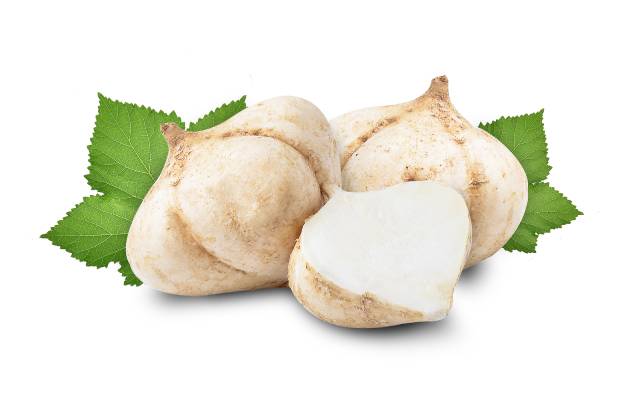
Jicama is an edible tuber that grows around the world, and it is also known as ‘Yam bean’ and ‘Mexican turnip.’
History
Jimaca is native to Mexico, and research suggests it has been a popular food for hundreds of years.
In this regard, records suggest that the Aztecs and Mayans both valued this tuberous vegetable (5).
In later centuries, jicama spread to Asia via Spanish colonialism in the Philippines (6).
Nutrients
Per 100 grams, cooked: 36 calories, 8.23g carbohydrates, 0.09g fat, 0.72g protein, water content: 90% (7).
Jicama also provides a good source of vitamin C, with approximately 16% of the daily value per 100 grams.
Aside from this, jicama contains a wide range of vitamins and minerals but only in small quantities.
Interesting Fact
Interestingly, only the tuber of the jicama plant is safe to eat, and the rest is poisonous. This is because of a toxin present in the plant called rotenone. Also, the tuber’s skin is poisonous; it is essential to peel jicama before cooking and consuming it (8, 9).
Taste
Jicama has an exciting taste that is a little bit like a water chestnut and slightly like lotus root but with a (mild) flavor of its own. Additionally, jicama retains a crunchy texture even after cooking, similar to the abovementioned vegetables.
Culinary Uses
People use jicama in many different ways, and some of its most popular uses include:
- Eaten raw as an ingredient in a salad
- Cooked and turned into jicama fries
- Chopped into cubes or slices and used in stir-fries
- Boiled or roasted as a side vegetable
3) Potato
Known scientifically as Solanum tuberosum, potatoes are among the most popular tubers—and vegetables—in the world.
They belong to the nightshade family of plants, alongside eggplant, peppers, and tomatoes.
There are dozens of different potato varieties, each with its own distinct characteristics.
History
Potatoes have a long history as part of the human diet, and they were first cultivated by the Inca people thousands of years ago (10).
The potato became increasingly popular after its 16th-century introduction to Europe, and from there spread around the world (11).
However, there was a tragedy in the 19th century when Ireland’s potato crop for the season failed to grow. More than a million died from the resulting ‘great famine’ (12).
Nutrients
Per 100 grams, cooked (with skin): 87 calories, 20.1g carbohydrates, 1.8g fiber, 0.1g fat, 1.87g protein, water content: 77% (13).
Potatoes offer a good source of vitamin B6, vitamin C, and potassium, containing 18%, 14%, and 8% of the daily value, respectively, per 100 grams.
For more information, see this complete nutritional guide to potatoes.
Interesting Fact
Potatoes and the products that contain them are some of the most popular foods in the world. Based on data for 2018, the average American consumed 52.3 kilograms of potatoes over the year, or a kilogram each week. However, some countries consume significantly higher amounts. For instance, the average person in Belarus consumes 172 kilograms of potatoes per year – approximately 3.3 kilograms per week (14).
Taste
Once cooked, potatoes have a soft texture and a mild flavor that some might describe as bland. However, the potato absorbs flavors from other ingredients well, and a few simple seasonings can transform the taste.
On this note, potatoes used in curries and stews absorb the flavors of the dish.
Culinary Uses
Potatoes are one of the most versatile tubers, and they can be prepared in numerous ways. As a result, they also feature in a wide range of food products.
- To make boiled, roasted, mashed, and fried potatoes
- Mixed with oil to make fries or potato chips
- Used in soups and stews
- Used in a wide variety of dishes, including casseroles, ‘pie’ dishes, various side dishes
- A wide variety of fried potato products (such as hash browns and potato wedges)
4) Ulluco
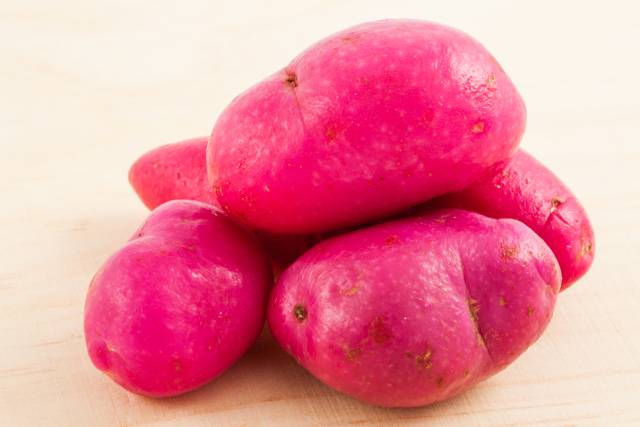
Known scientifically as Ullucus tuberosus, ulluco is a type of tuber native to South America. It has a relatively similar size and appearance to potatoes and can range in color from beige to yellow, pink, red, and purple.
Like potatoes, the skin of ulluco is perfectly edible, though it can also be peeled depending on personal preference.
History
It is thought that ulluco has been cultivated for thousands of years and is native to the High Andes mountain region in South America. In its homeland, ulluco is a dietary staple, but it is lesser known in Europe and the United States (15, 16, 17).
In recent years, Peru has begun to export canned ulluco products to the United States (18).
Nutrients
The USDA and other major nutritional databases hold canned and frozen ulluco data.
Per 100 grams, frozen: 111 calories, 23.3g carbohydrates, 7.8g fiber, 0g fat, 4.44g protein (18).
Research also shows that ulluco has a moderate vitamin C content, with approximately 28 mg per 100 grams of dry weight. This is equivalent to 31% of the daily value (19).
Interesting Fact
Despite being considered a crop that grows in upland areas of the tropics, ulluco has the potential to grow in a wider variety of climates. For example, researchers have managed to cultivate ulluco in fields in England and greenhouses in Canada and Finland (19).
Taste
Ulluco is thought to have an earthy, somewhat nutty, mildly sweet flavor. Ulluco retains its crunchy texture even after boiling.
Culinary Uses
Like other kinds of tuber, ulluco is a versatile ingredient with a wide range of uses:
- Ulluco is often used to thicken soups and stews
- Boiled and served as a side vegetable
- Sliced into long strips and cooked with other vegetables
- Used as an ingredient in various cooked dishes
5) Yam
The yam is an edible tuber belonging to the Dioscoreaceae family of plants. There are many different yam varieties, and they grow throughout the world in temperate and tropical regions (20).
One of the most popular yams is ube, also known as ‘purple yam,’ which has origins in the Philippines (21).
Yams are sometimes mistaken for sweet potatoes as they can have a similar appearance.
History
There are hundreds of yam species worldwide, and yams are thought to have been part of human diets since prehistoric times. However, research suggests the first yams probably originated millions of years ago, possibly as far back as the Late Cretaceous period (22, 23, 24).
Nutrients
Per 100 grams, cooked (with skin): 116 calories, 27.5g carbohydrates, 3.9g fiber, 0.14g fat, 1.49g protein, water content: 70% (25).
Yams also provide a good range of micronutrients, particularly vitamin C (13% DV), potassium (14% DV), and manganese (16% DV).
Interesting Facts
Although yams grow in different countries worldwide, 95% are in sub-Saharan Africa, mainly Nigeria. In 2021, global yam production stood at 75.1 million tonnes (26).
Also, yams can vary significantly in size and appearance, and some can grow to more than 100 pounds (45 kilograms) in weight (27, 28).
Taste
Despite yams sharing a similar appearance to sweet potatoes, the differences are more apparent regarding their taste.
For instance, yams do not have the same sweetness and soft texture as sweet potatoes and have characteristics closer to potatoes.
Yams have a mild, slightly earthy flavor.
Culinary Uses
Yams have numerous culinary uses:
- They often feature in soups and stews
- Fried yams are a popular snack food
- Boiled and served as a side vegetable
- Some yams (such as purple ube) are used in deserts for their attractive color
- Added to curries and stir-fries
- Roasted yams
Final Thoughts
As this article shows, there are several different types of tubers, all of which offer good nutritional benefits.
Tubers mostly tend to be a good source of carbohydrates, vitamin C, and potassium, and they provide a moderate amount of energy.
Since they are so versatile, it is easy to use them in a wide range of different dishes.

